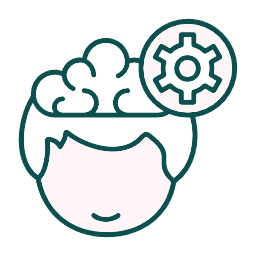
PTSD is a mental health condition that develops after experiencing or witnessing a traumatic event. It causes intense, disturbing thoughts, flashbacks, nightmares, and avoidance behaviors that disrupt daily life. With professional help and family support, recovery is possib

PTSD can disrupt daily life through flashbacks, nightmares, avoidance, and constant fear. These symptoms often feel uncontrollable, affecting relationships, work, and overall well-being.

Sudden, vivid memories or disturbing dreams that feel real.

Repetitive, distressing thoughts about the traumatic event.

Steering clear of reminders linked to trauma.

Detachment, shame, loss of interest, and disconnection.

PTSD develops when the mind struggles to process traumatic experiences. The severity, frequency, and lack of support after trauma increase the risk. Past childhood trauma or existing mental health conditions can also make people more vulnerable. Also these –
Exposure to traumatic events (war, accidents, disasters, assault, abuse)
Severity and frequency of traumatic experiences
Lack of social or emotional support after trauma
Pre-existing mental health issues (anxiety, depression)
Childhood trauma or neglect

Family plays a vital role in recovery by offering patience, understanding, and stability. Supportive actions at home help reduce stress, avoid triggers, and create a safe space for healing.
Families can make a powerful difference in PTSD recovery by creating a safe, supportive environment that reduces stress and strengthens healing.
Be Supportive & Understanding – Listen without judgment, show empathy.
Reduce Stress – Encourage rest, exercise, relaxation, and healthy routines.
Help Avoid Triggers – Identify and minimize reminders of trauma.
Be Patient – Recovery is gradual; progress takes time.

(Areas Often Discussed in Sessions)
PTSD affects daily life through flashbacks, avoidance, anxiety, and negative thoughts. Therapy focuses on helping individuals process trauma, reduce symptoms, and rebuild emotional safety with the right support.
Need something beyond personalised Counselling? Ask for a Custom Treatment Plan.
Psychologist identifies symptoms and builds a personalized treatment plan.
Learn how trauma affects thoughts, emotions, and daily life.
Work through CBT, EMDR, PE, or CPT in safe, guided sessions.
Track progress, strengthen coping strategies, and involve family.

Still have questions about therapy or treatment?
Our psychologists are here to listen and guide you. Book a consultation today and take your first step forward.
A condition triggered by trauma, leading to flashbacks, nightmares, and avoidance.
Yes. With therapy and support, most people recover and regain stability.
By offering understanding, reducing stress, and avoiding judgment.
CBT, EMDR, Prolonged Exposure, and CPT are proven effective for PTSD.
It varies. Some improve in weeks, while others need longer-term support.